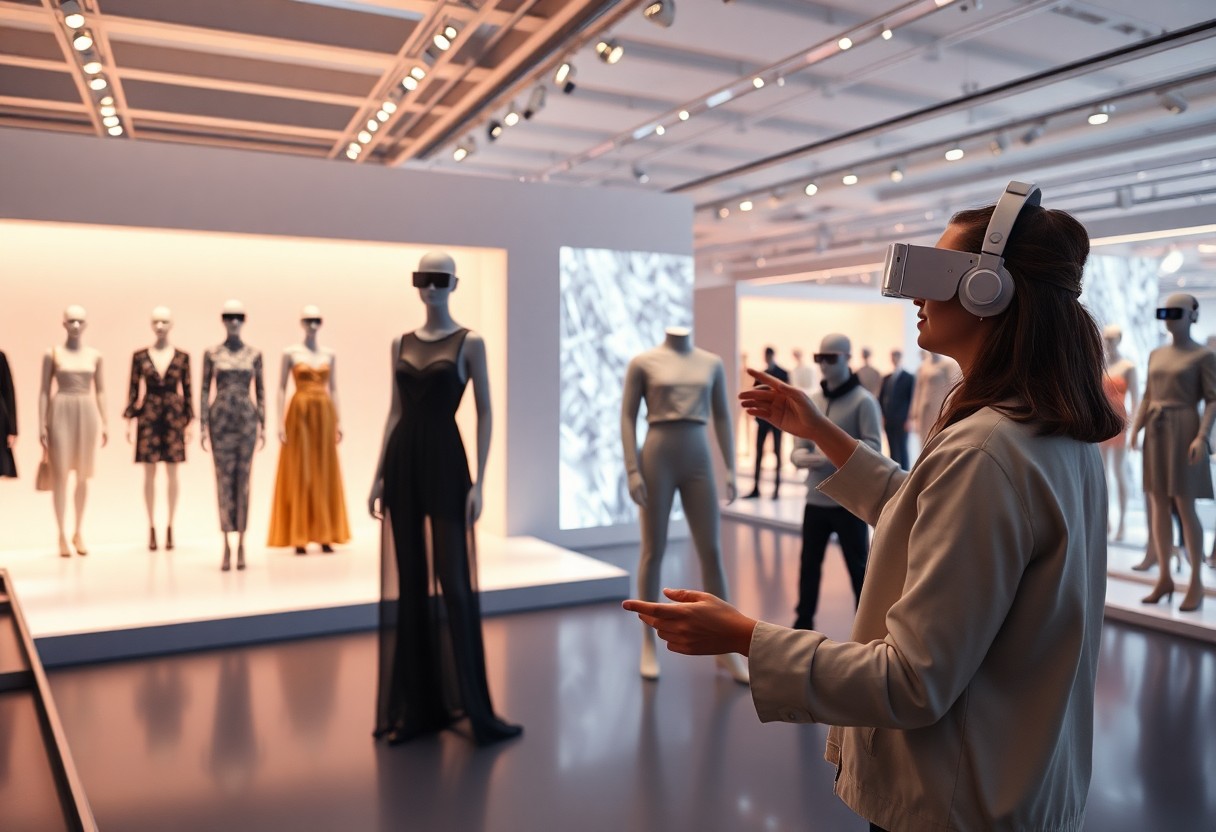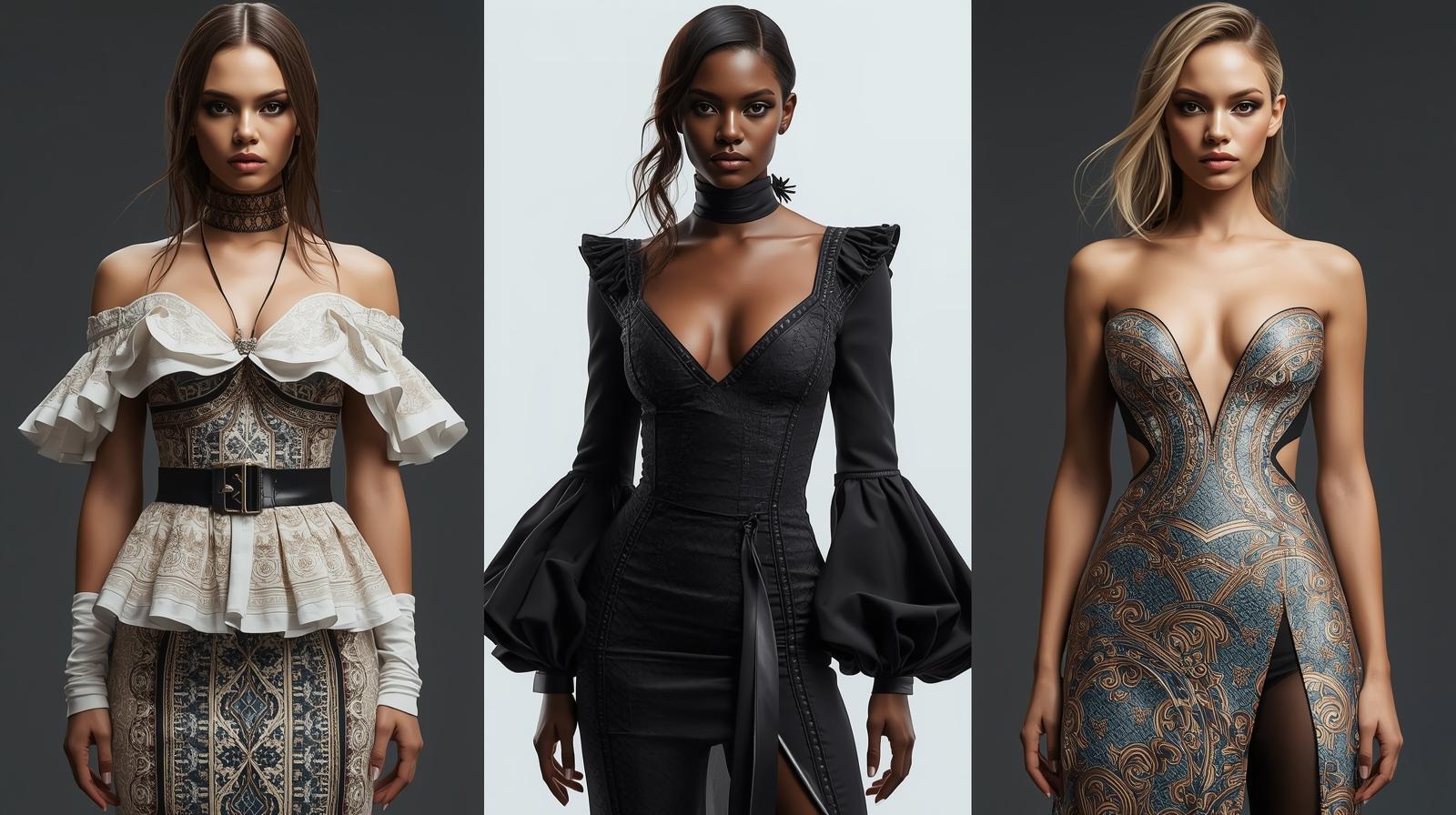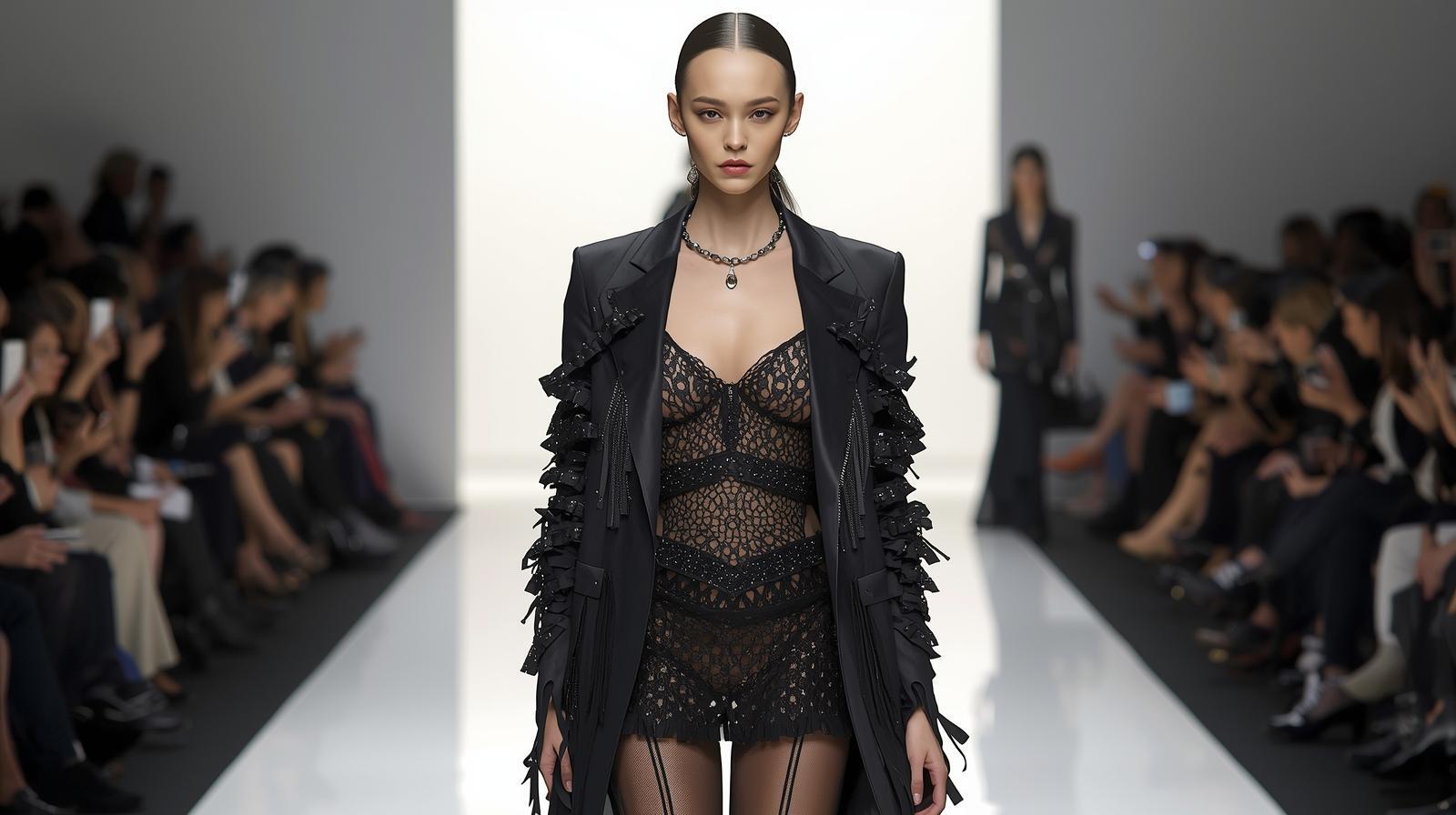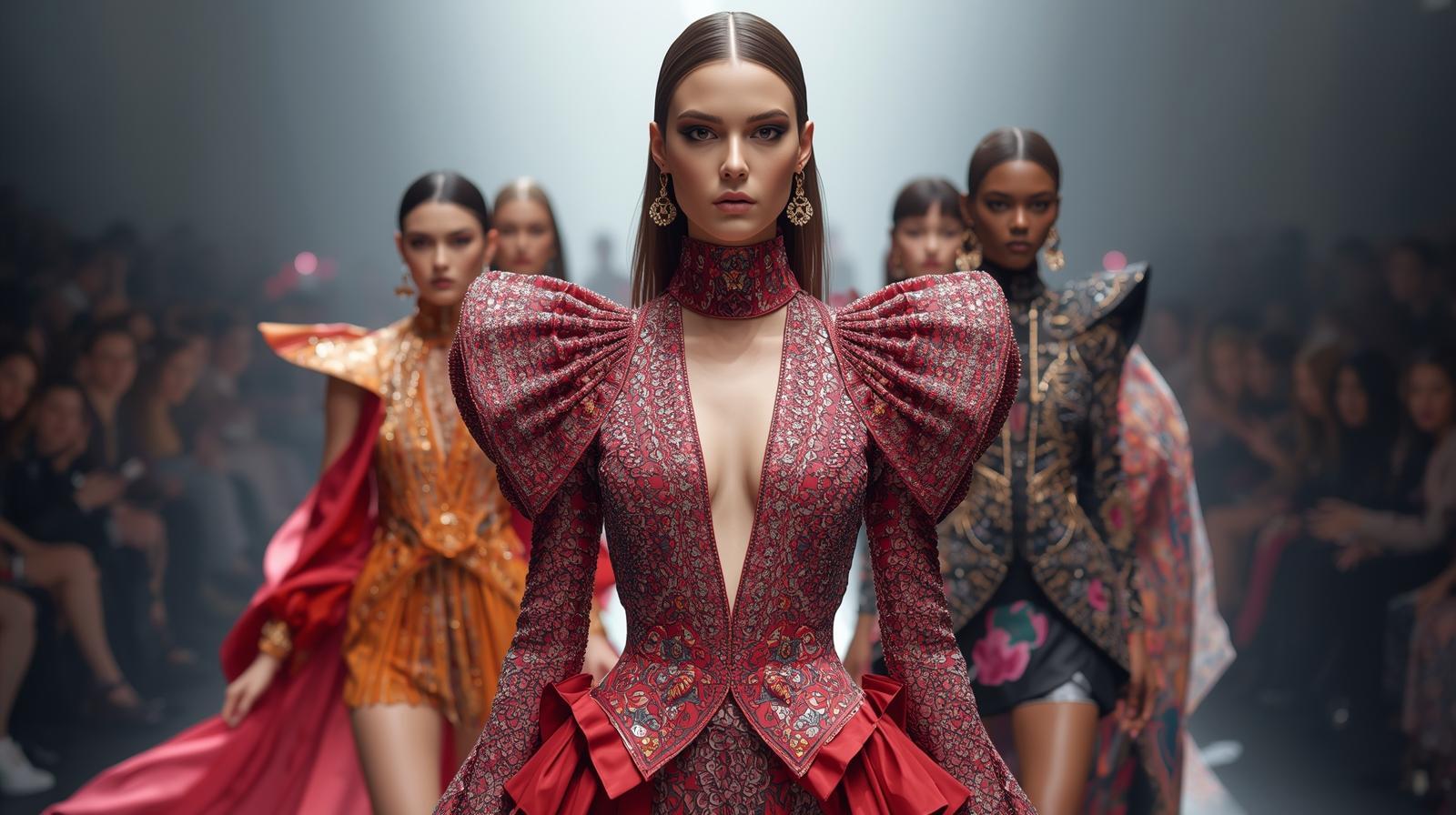28th Oct 2025
Digital Runways & Virtual Garments - The Metaverse’s Impact on Fashion

There’s a transformative shift happening in the fashion industry as digital runways and virtual garments take center stage within the metaverse. This new landscape offers you innovative ways to express your style without the environmental impacts of traditional fashion. As brands embrace NFT technology and virtual retail experiences, your connection to fashion is becoming more immersive and personalized. However, this evolution also poses challenges, including intellectual property concerns and the risk of exclusivity exacerbating social divides. Explore how the metaverse is redefining your relationship with fashion today.
The Evolution of Fashion in the Digital Age
The digital age has revolutionized fashion, reshaping not only design but also consumption and marketing. Traditional fashion cycles are now intertwined with technology, allowing for rapid prototyping and global reach. You witness trends emerging and dissipating within weeks, as brands leverage data analytics to predict what will catch consumer attention. This evolution also opens doors for inclusivity, enabling diverse voices in fashion that transcend geographical limitations.
The Rise of Virtual Fashion
Virtual fashion has emerged as a powerful force, offering unique experiences through immersive digital environments. You can now don clothing that exists solely in the virtual realm, allowing for limitless creativity and sustainability. Brands like Balenciaga and DressX have embraced this by creating digital-only collections, appealing to a tech-savvy audience eager for innovation.
Impact of Social Media on Fashion Trends
Social media has fundamentally reshaped the fashion landscape, enabling trends to spread at lightning speed. With platforms like Instagram and TikTok, you can see what's trending in real-time, influencing your purchasing decisions instantly. This democratization allows micro-influencers to gain significant traction, shifting the power dynamics once held by fashion houses.
The statistics are staggering: 60% of consumers state that social media influences their buying decisions in fashion. This push for instantaneous feedback transforms how you engage with brands. The rise of user-generated content means that you no longer rely solely on brand narratives; instead, you absorb a diverse range of opinions and aesthetics that shape your understanding of style. Marketers utilize hashtags and viral challenges to keep you engaged, creating communities built around niche trends that can skyrocket overnight.

The Metaverse: A New Frontier for Fashion Brands
The metaverse opens up unprecedented opportunities for fashion brands, allowing you to engage with consumers in immersive and interactive environments. By leveraging virtual platforms, brands can reach wider audiences and redefine the shopping experience. The blend of creativity and technology facilitates unique expressions of identity and personal style, making fashion more accessible and dynamic within this expansive digital landscape.
Immersive Shopping Experiences
Immersive shopping experiences in the metaverse transform how you discover and purchase fashion. Virtual storefronts provide 3D environments where you can try on garments using avatars, interact with digital collections, and even attend virtual fashion shows. This not only enhances your shopping experience but also fosters a sense of community among users, driving a new level of engagement.
Brand Engagement through Virtual Platforms
By engaging with virtual platforms, brands create lasting connections with you through unique digital experiences. Collaborations with popular virtual worlds or influencers can amplify reach and authenticity, making you feel more invested in the brand narrative. Notably, brands like Balenciaga and Gucci have embraced this approach, launching exclusive collections in platforms like Fortnite and Roblox, captivating a younger clientele and integrating fashion into gaming.
Brands are not just planting their flags in virtual spaces; they are crafting narratives that resonate with you on a personal level. For instance, Gucci collaborated with Roblox to host a virtual event, generating millions in sales while the digital sneakers caught the eye of influencers and gamers alike. These initiatives engage you with interactive experiences, social events, and limited-edition items, reinforcing emotional ties to the brand while transforming consumer behavior in line with the growth of digital interaction.
Sustainable Fashion in the Metaverse
Incorporating sustainable practices within the Metaverse revolutionizes how you engage with fashion. By creating virtual experiences, brands can showcase their commitment to sustainability while reducing the ecological footprint. This shift enables consumers to explore eco-friendly options without physical limitations, paving the way for innovative solutions that prioritize environmental consciousness in style.
Eco-Friendly Digital Garments
Digital garments are a game changer for sustainability in the fashion industry. Instead of contributing to pollution and waste, eco-friendly virtual clothing can be created with a fraction of the resources, requiring no physical materials. This virtual attire allows you to express your style while supporting environmentally conscious practices, making fashion consumption more sustainable than ever.
Reduced Waste in Fashion Production
The traditional fashion industry is notorious for its wasteful practices, generating around 92 million tons of waste annually. The Metaverse presents a solution to this crisis through virtual fashion, where designs can be created and experienced without the logistical burdens of manufacturing physical items. This digital shift allows for instantaneous sampling and alterations, leading to a significant reduction in surplus production.
As you engage with the Metaverse, consider how much waste can be eliminated through reduced production cycles. Brands can produce limited runs of digital clothing, ensuring that items are made only based on customer demand. For instance, companies like DressX and Replicant focus on creating digital-only collections that minimize resource usage and environmental impact. This model exemplifies how fashion can pivot away from the fast fashion mindset, fostering a new era where sustainability is not just an add-on but a fundamental aspect of the fashion experience you enjoy.
The Role of Technology in Virtual Fashion Design
Your journey into virtual fashion design hinges on technology's evolving role. With innovations like augmented reality and blockchain, designers can create immersive experiences that blend creativity with consumer engagement. This shift not only enhances visualization for clients but also introduces collaborative processes in design development, allowing for real-time feedback and adjustments.

3D Design Tools and Software
You can transform your design concepts into stunning visualizations using 3D design tools like CLO 3D and Marvelous Designer. These advanced programs facilitate the creation of realistic virtual garments, enabling you to simulate fabric behavior and texture. By utilizing these tools, you enhance your workflow, reduce physical material waste, and bring innovative designs to life with unprecedented detail.
Ethical Considerations in Digital Creation
As you explore digital creation, ethical considerations must be at the forefront. Issues such as intellectual property, digital labor rights, and the environmental impact of data processing require careful attention. The implications of creating virtual fashion extend beyond aesthetics, challenging you to adopt responsible practices throughout your design process.
Your ethical approach in digital fashion reflects increasingly pressing concerns about sustainability and fairness. For instance, the digital fashion industry can exploit virtual models and design patterns without using physical resources, yet this creates a new challenge regarding ownership and the rights of creators. Approaching virtual creation with a focus on ethical responsibility ensures that your contributions to the fashion ecosystem are both innovative and equitable, particularly as the line between digital and physical worlds continues to blur.
Consumer Behavior and Virtual Fashion
As you navigate the evolving landscape of fashion, the rise of virtual garments significantly influences your purchasing patterns. The ease of access to digital collections and immersive experiences allows you to experiment with styles beyond traditional limits, enabling a more exploratory approach to fashion. This newfound freedom fosters a burgeoning demand for virtual outfits, reshaping how you perceive and engage with brands.
Changing Perceptions of Ownership
Your understanding of ownership is increasingly challenged as virtual fashion blurs the lines between tangible and intangible assets. Instead of investing in physical garments, you now consider digital apparel as a legitimate form of self-expression, underscoring the shift towards experiences over possessions. This transformation signifies a societal shift in valuing uniqueness in a digital realm.
The Influence of Virtual Influencers
Virtual influencers are reshaping your interaction with fashion brands by creating relatable, yet aspirational, personas. These digital avatars, like Lil Miquela or Shudu, boast millions of followers and can drive significant engagement, pushing you to rethink your fashion choices. Their content generates a unique blend of entertainment and marketing, making them strong advocates for brands and trends in the ever-expanding digital realm.
With their hyper-realistic designs and engaging narratives, virtual influencers connect with you on a personal level. They create communities around shared interests in fashion while providing a showcase for digital collections. Notably, Lil Miquela partnered with Prada, blending intersecting worlds of fashion and technology, driving sales and brand visibility. As you follow these avatars, your expectations for brand authenticity and creativity evolve, encouraging brands to experiment with visual storytelling and tech integration in your fashion experience.
Challenges and Opportunities Ahead
The fast-paced evolution of virtual fashion presents both significant challenges and unique opportunities for you as a consumer and designer. While traditional fashion industry practices may not seamlessly translate to the metaverse, you have the chance to redefine norms and embrace sustainable practices that emphasize digital sustainability. Adapting to new technologies and social engagement strategies can pave the way for creative innovation, but it requires a willingness to navigate uncharted terrains in consumer behavior and corporate responsibility.

Navigating Intellectual Property Rights
As you explore into the metaverse, protecting your creative assets becomes paramount. The blurred lines between digital and physical fashion create complexities in intellectual property rights, presenting challenges when enforcing copyrights and trademarks. Misappropriation risks increase with the ease of replicating digital designs, raising questions about ownership. You’ll need to stay informed and consider leveraging blockchain technology for provenance and authenticity to safeguard your work in this emerging space.
Accessibility and Inclusion in Virtual Fashion
In virtual fashion, accessibility can often fall short of expectations. Despite its potential to reach a global audience, users with disabilities may struggle to engage with virtual environments due to design shortcomings. It’s imperative to incorporate universal design principles, ensuring your virtual clothing and spaces cater to diverse user needs. Initiatives such as 3D avatar customization features can promote representation and inclusivity, allowing you to create virtual fashion that is truly accessible.
Addressing accessibility and inclusion in virtual fashion means more than just compliance with standards; it demands a proactive approach. Initiatives like incorporating voice commands, customizable features, and adaptable designs ensure all users can enjoy the immersive experience of virtual fashion. Consider implementing community feedback loops to understand the diverse needs of your audience. By focusing on accessibility, you make virtual fashion not only a realm of creativity but also a welcoming space for everyone, fostering a more inclusive industry overall.
To wrap up
Upon reflecting, you can see that digital runways and virtual garments significantly reshape your understanding of fashion in the Metaverse. This innovative landscape not only allows you to experiment with styles without physical constraints but also enables you to engage with brands in entirely new ways. As the boundaries between reality and digital storytelling blur, you can harness these technologies to express your identity and explore fashion like never before, ensuring your presence remains dynamic and influential in this evolving industry.

